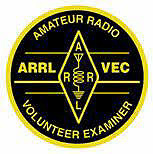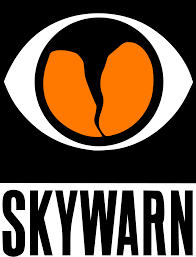Like the use of standard phonetics, the use of standard Procedure Words (usually referred to as PROWORDS) helps to ensure the clear conveyance of information between radio operators.
Like phonetics, there is a standard set of prowords used in communications, increasing the probability of understanding even when hearing only a part of the proword during noisy conditions.
Some prowords are more commonly used than others, and some prowords, while more expedient, can be a little confusing because they aren't commonly used in Amateur Radio.
Here are some of the most common prowords you'll hear on formal nets, especially when passing formal traffic:
| THIS IS | A station is about to identify themselves. Probably the most common one of all! |
| I SPELL | Indicates a station is going to spell a difficult or easily misunderstood word. Say the word first, then I SPELL, then spell phonetically. |
| OVER | A station is ending the current transmission and awaiting a response. |
| OUT | A station is ending its transmission and is signing off. No response is expected. |
| AFFIRMATIVE | "Yes" or request approved. |
| NEGATIVE | "No" or request denied. |
| WAIT | Indicates a transmitting station needs time to prepare. May include OUT if station will call back when ready. |
| STANDBY | Indicates station is not ready to copy. May be followed by a number indicating number of minutes (i.e. STANDBY ONE). |
| ROGER | Indicates transmission received. It does not indicate compliance ("I heard you"). NOTE: NOT "ROGER THAT" or "COPY THAT", neither are prowords. |
| CORRECT | Indicates other station has received information correctly (after receiving station asks for confirmation). |
| CORRECTION | Indicates station caught an error. Will go back to point of error, make correction, and continues with transmission. |
| DISREGARD | Indicates transmitting station has committed an error to the point everything should be ignored, and starting over. |
| SAY AGAIN | A request from the receiving station, asking to repeat. If followed by "ALL AFTER" or "ALL BEFORE" then part of the message will follow. |
| I SAY AGAIN | The transmitting station is about to repeat the transmission to ensure it is received properly. |
| RELAY | A station may break in to indicate he can relay traffic from between two other stations having difficulty. |
| UNKNOWN STATION | Used in place of a station's call sign when transmitting station doesn't know the other's call sign. |
| MESSAGE FOLLOWS | Indicates Radiogram message to follow. |
| NUMBER | Indicates the message number in formal message (MESSAGE FOLLOWS NUMBER 11 Routine ...). |
| Messsage Precedences. |
Follows the message number. EMERGENCY: Life or property at risk. PRIORITY: Important traffic, but not EMERGENCY, WELFARE: Welfare traffic (defers to EMERGENCY and PRIORITY), ROUTINE: Lowest priority. |
| BREAK |
is used to separate NTS message text from the address or signature blocks. NEVER use to interrupt a contact in progress, unless an emergency! |
Lesser, but still sometimes, used prowords include:
| WILCO | Indicates transmission received and will comply. Do not use ROGER and WILCO together. This is seldom used in Amateur Radio. |
| INITIAL | A single letter, given phonetically, follows. Usually used when an initial or other single character letter needs to be passed. |
| FIGURES | A number follows, but the use of multipliers is allowed (i.e. One Thousand for 1,000). |
| WRONG | A station may break in between transmissions with "WRONG" to indicate some incorrect information just passed. |
| BREAK-BREAK | BREAK or BREAK-BREAK, when used to interrupt other communications is ALWAYS a declaration of emergency and operators should immediately yield the frequency. |
Again, comparing to phonetics, it is important to use these words as opposed to some other words having the same meaning. For instance, we often use "CLEAR" to indicate we are leaving the repeater. When I first started in Amateur Radio I used "OUT" (back from my days as Civil Air Patrol cadet radio operator). I ultimately started using "CLEAR" because that's what I kept hearing on the repeater.
While our use of other words during casual communication is unimportant, it IS important to use the proper ones during tactical and formal nets.




